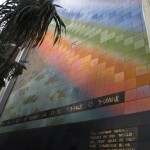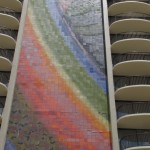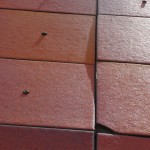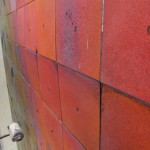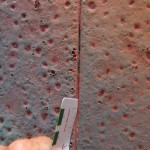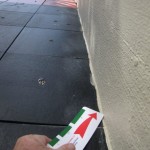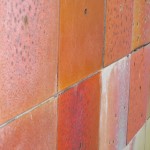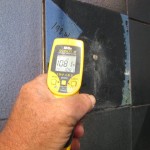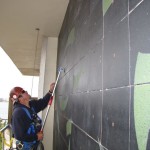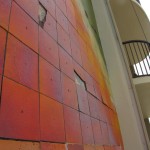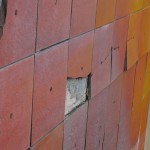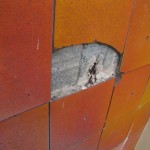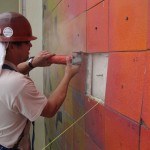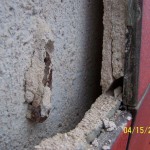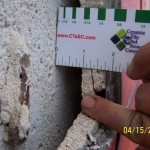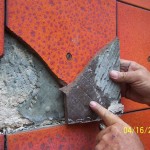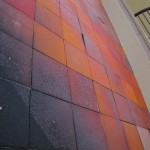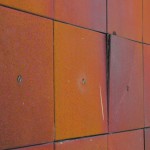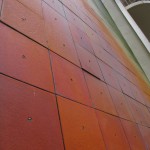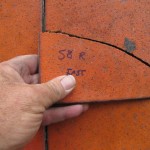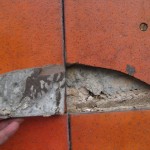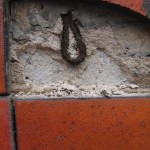No products in the cart.
Case Study
Investigation of Ceramic Tile Exterior Veneer Failure
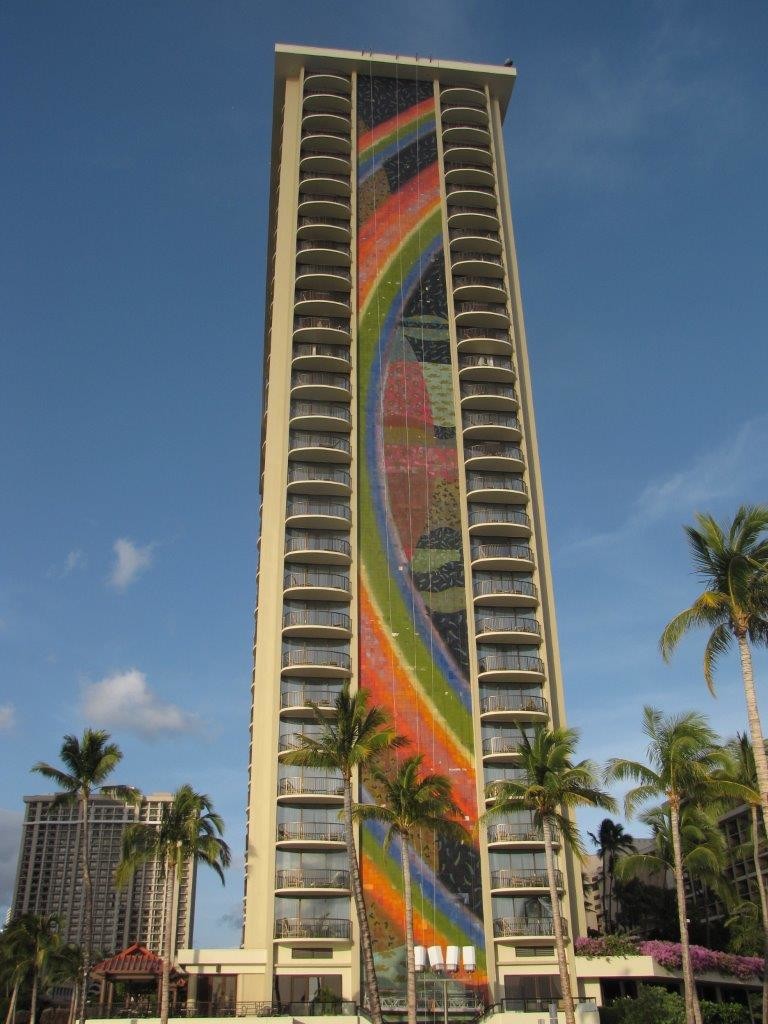
The Problem
Investigation of Ceramic tile Exterior Veneer Rainbow Mural at Hilton Hawaiian Hotel Background: The 30 story hotel had two ceramic tile rainbow murals attached to the exterior veneer of their building. Some tiles have fallen off of the rainbow murals on the two sides of the hotel, which are facing the ocean side and the mountain side respectively. The murals were installed in 1968 and reportedly consist of 8,046 pieces of tile installed on each of the two sides of the building with the dimensions of 286 feet high and 26 feet wide. It was reported that due to tiles coming loose soon after the initial installation every tile was attached to the building with a screw placed in the center of the tile. Since then, additional tiles have fallen off predominately on the ocean facing side. The glazed ceramic tiles were manufactured by Franciscan Tile on their extruded and pressed Terra Floor vitreous clay tile body and then painted and kiln-fired with a special glaze in collaboration with the artist Millard Sheets. Request: CTaSC was asked to investigate and inspect both murals from top to bottom to determine the cause of the tile debonding, to determine the extent of the problem, to determine if the installation met industry standards, and to determine how best to remediate the problems.The Solution
Inspection Findings:- From a swing-lift our inspectors traveled up and down both sides of the 300 foot tall building inspecting all of the 8,046 pieces of tile.
- Mural Tile sizes were approximately 11.5 x 11.5 x 0.5 inches. There were some tiles at the bottom of the mural that were approximately 10 x 10 x 5/16 inches in size.
- There were tiles missing from the mural.
- All of the tiles had screws in the middle of them, which were added after the original installation due to tiles falling from the building.
- Many of the tiles were tented and bulging out from the building.
- Many of the tiles were butt up to each other with no grout joint.
- The perimeter of the mural was butted up to a restraining wall and there was no movement joint.
- There was some efflorescence staining coming out of some of the grout joints.
- The temperature of the tile surfaces were over 100 degrees F.
- We sounded the with our DDT sounding device, which showed that most of the tiles were hollow sounding.
- We unscrewed some of the tiles and they fell from right off, and others stayed attached, but were precariously attached to the building.
- We cut out a section of the mortar bed behind the tile and found that the mortar bed had debonded from the cast-in-place concrete wall. There was about a 1 inch gap between the mortar bed and the concrete wall.
- Many of the tiles did not have full thin-set contact and had voids in the thin-set.
- One area had some portions of tile missing and had tiles bulging out from the wall. When we looked closer, the bulging tiles were cracked. When we removed the bulging portion of the tile we found a rusted and badly corroded metal form tie bent over and embedded into the mortar bed.
- We found another area with bulging tiles and removed the portion of the tile that was bulging out. The bulging portion of the tile was cracked. When we removed it we found another rusted and corroded metal form tie bent over and embedded in the mortar bed.
- We found another area with bulging tiles and removed the portion of the tile that was bulging out. The bulging portion of the tile was cracked like the others. When we removed it we found a bulging pieces of thin-set and mortar that was loose. When we removed the mortar we found another rusted and corroded metal form tie bent over and embedded in the mortar bed.
- The primary cause of the rainbow mural tile assembly to debond and crack is due to the metal form ties, which were bent over and covered with the mortar bed. The corroding and expanding metal tiles cause stress within the tile assembly. The stress was further compounded because the tiles were butted up to each other not allowing any movement, and constraining the tile and its pent up stress. There were no movement joints to help relieve the stress. The bond strength between the mortar bed and the concrete substrate was deficient and not able to restrain the tile and the mortar bed from moving, which led to the debonding.
- Both the ocean side and the mountain side murals have the same type of deficiencies. The mountain side mural had slightly more cracks, but overall the ocean side was in worse condition considering that about 98% of the tile was hollow sounding versus 82% of the mountain side sounding hollow. Both sides had tenting and debonding as a result of the metal form ties corroding, and the bond strength between the mortar bed and the concrete substrate being weak.
- The only way to properly repair these two rainbow murals is to completely replace them.
- Remediation guidelines should be developed to be used for bidding and managing the replacement process.
- A quality control process should be implemented to help ensure a successful and along lasting tile installation.
- The murals were eventually replaced. A new tile mural was produced and tiles were installed over the properly prepared substrate. A quality control plan was developed and implemented.

